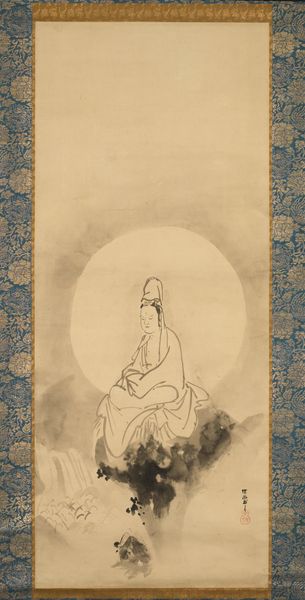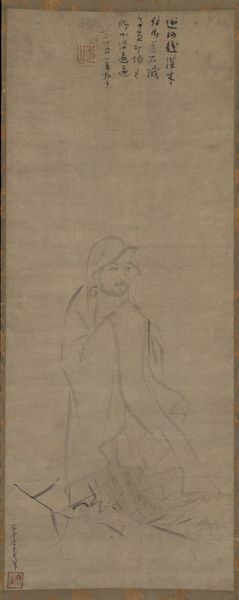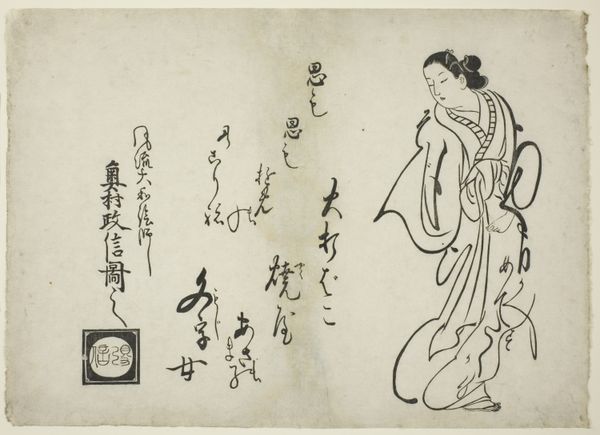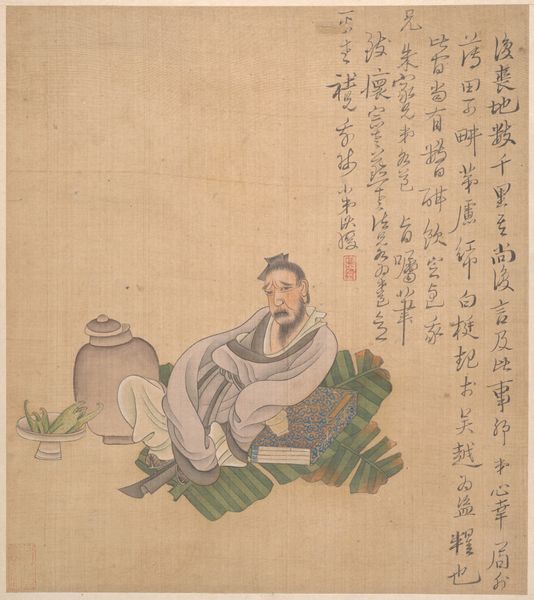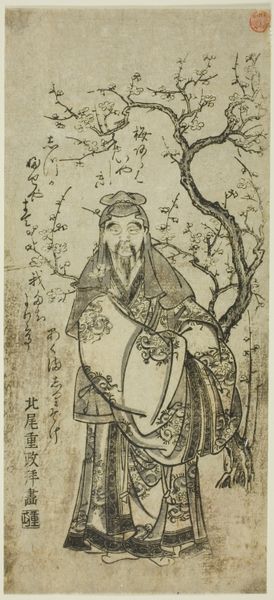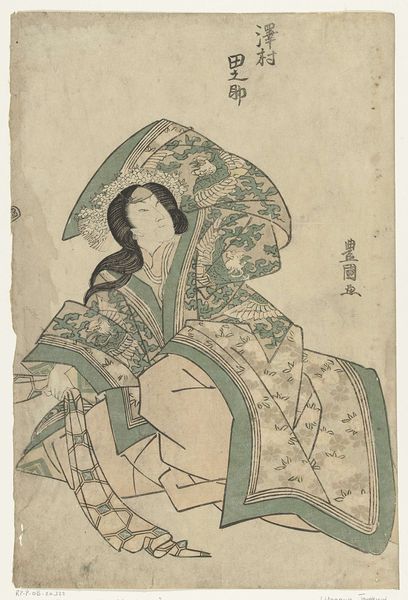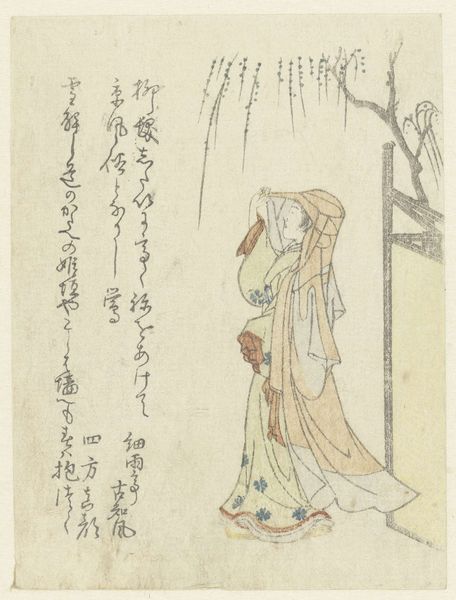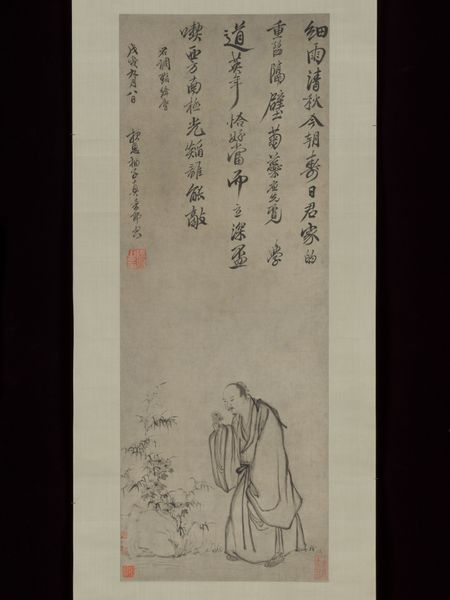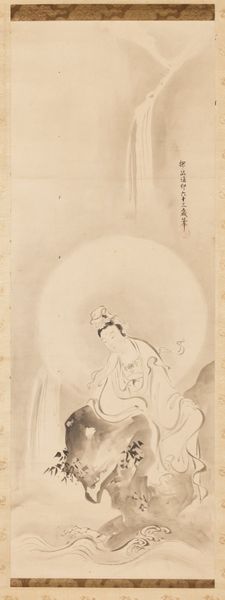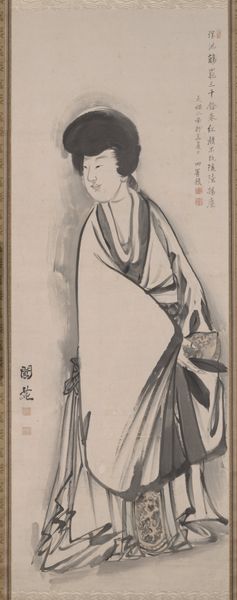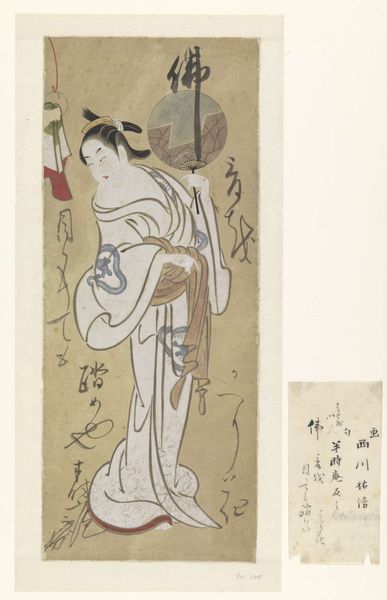
hanging-scroll, ink
#
portrait
#
asian-art
#
japan
#
figuration
#
hanging-scroll
#
ink
#
calligraphy
Dimensions: 45 1/8 × 16 7/16 in. (114.62 × 41.75 cm) (image)69 15/16 × 19 13/16 in. (177.64 × 50.32 cm) (mount, without roller)
Copyright: Public Domain
Curator: I find this hanging scroll to be quite evocative. Editor: This is Nakabayashi Chikuto's "Portrait of Tao Yuan-ming," possibly from 1858, ink on paper. I’m immediately drawn to the figure's stillness, the monochrome palette creating a sense of quiet contemplation. How do you interpret this work? Curator: Beyond the immediate serenity, I see a deliberate construction of identity through art. Nakabayashi evokes Tao Yuan-ming, a historical figure celebrated for rejecting official life to embrace rural simplicity. How might this resonate with the socio-political currents of 19th-century Japan? Editor: It's interesting you mention that. Was it common for artists to engage with past figures as a form of commentary? Curator: Precisely. Think about the cultural and political contexts. Japan was undergoing immense upheaval with the looming threat of Western influence. Perhaps Nakabayashi uses Tao Yuan-ming as a symbol of resistance, a gentle reminder of the value of tradition and self-sufficiency in a rapidly changing world. What does the act of *remembering* mean in times of societal transformation? Editor: That gives me a different perspective. I was focused on the aesthetics, but you're encouraging me to see it as a commentary on cultural preservation. It's about holding onto an identity. Curator: Exactly! The artist's choices--the figure, the medium, even the calligraphic inscription--all contribute to a carefully crafted statement. Art often performs this complex dance between homage, resistance, and self-expression. Editor: This has been enlightening! I hadn't considered the political implications of portraying someone who valued individualism and simplicity. Curator: Art invites us to continually re-evaluate, re-contextualize. Each encounter becomes an opportunity to enrich our understanding of the past and its relevance to the present.
Comments
No comments
Be the first to comment and join the conversation on the ultimate creative platform.

